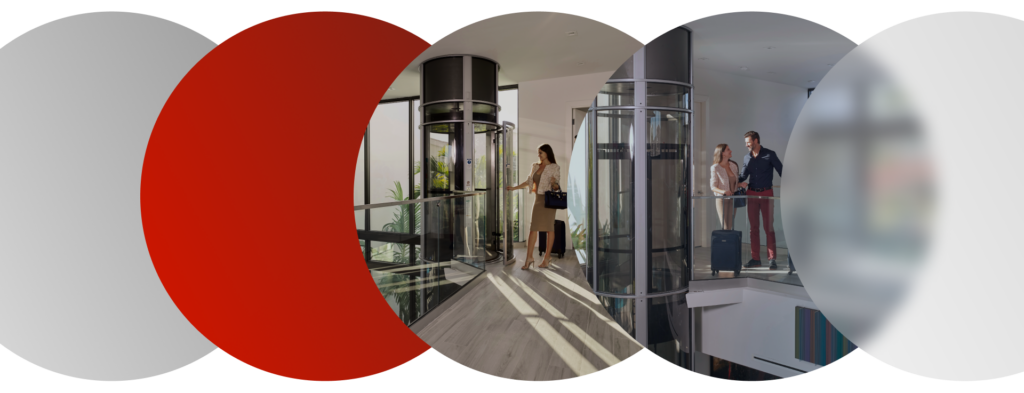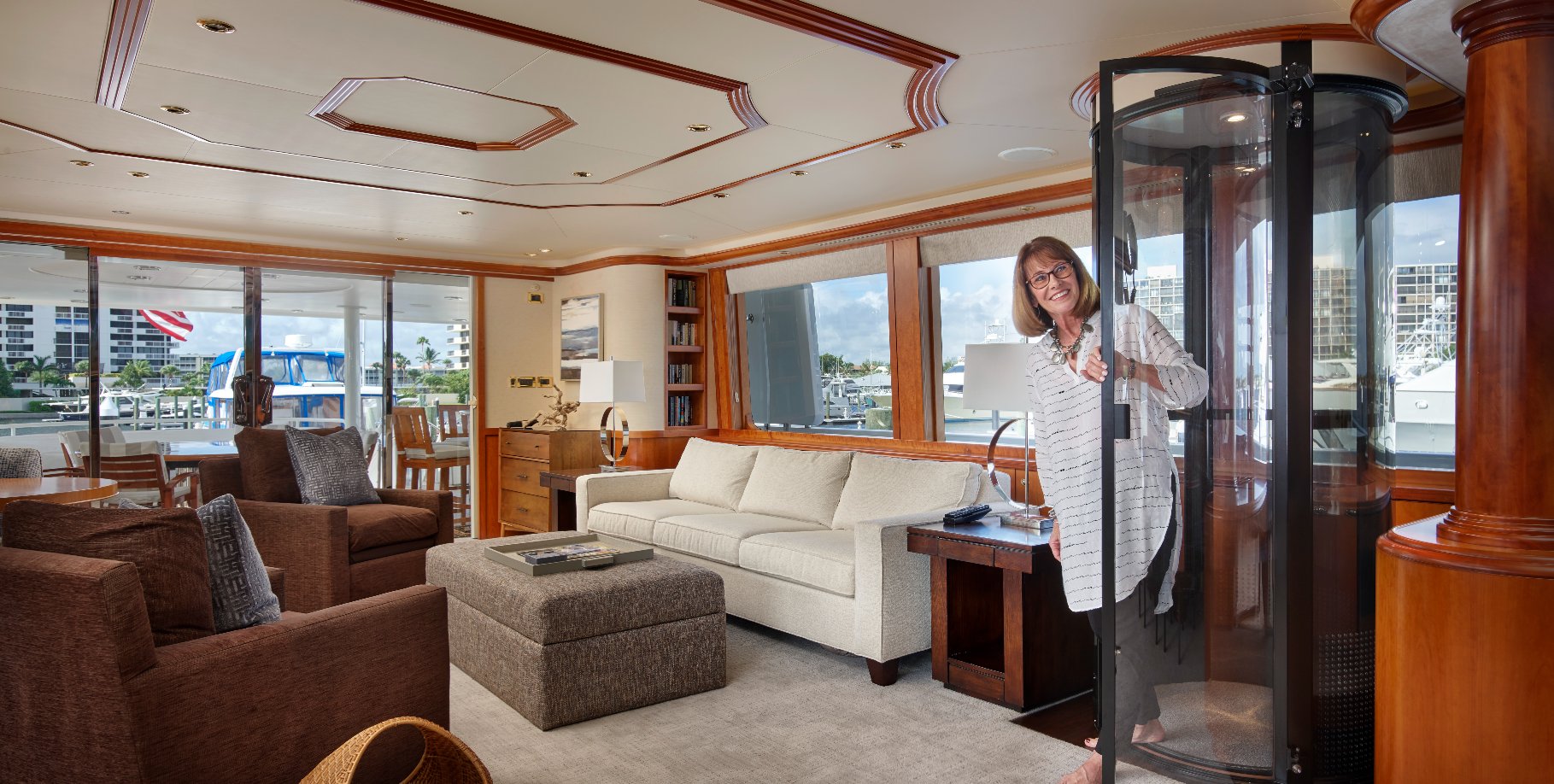Interior residential elevator has revolutionized the way people navigate their homes, offering unparalleled convenience and accessibility. These vertical transport systems are not only practical but also add a touch of luxury to any residence. With the aging population and the increasing emphasis on universal design, the demand for interior residential elevators has surged in recent years.
The Evolution of Home Mobility Solutions
Gone are the days when elevators were exclusively associated with commercial buildings and skyscrapers. Today, homeowners are embracing the idea of incorporating elevators into their residential properties, transforming the way they move between floors. This shift reflects a broader societal trend towards prioritizing comfort and ease of access within the home environment.
Addressing Accessibility Challenges
One of the primary motivations behind the installation of interior elevator is to address mobility challenges. It is good for individuals with disabilities or limited mobility. These elevators offer a practical solution for those who find it difficult to climb stairs. It allows them to move freely within their homes without constraints. By promoting independence and autonomy, interior residential elevators contribute to a more inclusive living environment.
Enhancing Home Value and Aesthetics
Beyond their functional benefits, interior residential elevators also serve as a statement of luxury and sophistication. Homeowners recognize the added value that elevators bring to their properties, both in terms of resale value and overall appeal. Furthermore, modern elevator designs seamlessly integrate with various architectural styles, enhancing the aesthetic appeal of interior spaces.
Customization and Personalization Options
One of the key advantages of interior elevators is the ability to customize them. It needs according to individual preferences and spatial constraints. Whether it’s selecting the perfect finish to complement the existing decor or optimizing the layout to fit within tight spaces, homeowners have a myriad of options to tailor their elevators to suit their unique needs. This level of customization ensures that the elevator seamlessly integrates into the overall design scheme of the home.
Overcoming Space Limitations
In urban areas where space is at a premium, interior residential elevators offer a practical solution for vertical transportation. They do best without sacrificing valuable square footage. Unlike traditional staircases, elevators occupy minimal space, making them an ideal choice for compact dwellings such as townhouses and condominiums. By maximizing vertical space, homeowners can optimize the functionality of their living areas while maintaining a sleek and contemporary aesthetic.
Energy Efficiency and Sustainability
Modern interior residential elevators are designed with energy efficiency in mind, incorporating advanced technologies to minimize power consumption and environmental impact. From energy-efficient motors to regenerative braking systems, these elevators adhere to stringent sustainability standards, making them a responsible choice for eco-conscious homeowners. By reducing energy usage and greenhouse gas emissions, interior residential elevators contribute to a more sustainable built environment.
Future Trends and Innovations
Looking ahead, the future of interior elevators is marked by continued innovation and technological advancements. Manufacturers are constantly exploring new materials, design concepts, and automation features to enhance the performance and user experience of elevators. From smart home integration to predictive maintenance capabilities, the next generation of interior residential elevators promises to redefine the standards of home mobility and convenience.
Integrating Smart Technologies
One of the most exciting developments in the realm of interior residential elevators is the integration of smart technologies. Homeowners can now control their elevators remotely using smartphones or voice commands, allowing for seamless integration into modern smart home ecosystems. These smart features not only enhance convenience but also improve safety and security by providing real-time monitoring and alerts.
Addressing Safety Concerns
While interior residential elevators offer numerous benefits, safety remains a paramount concern for homeowners. Manufacturers prioritize safety features such as emergency brakes, door sensors, and backup power systems to ensure reliable operation and peace of mind for users. Additionally, regular maintenance and inspections are essential to uphold the safety standards of residential elevators and prevent potential accidents or malfunctions.
Financial Considerations and Return on Investment
Investing in an interior elevator is a significant decision that requires careful consideration of financial implications. While the upfront cost may seem daunting, homeowners should view it as a long-term investment that enhances the value and marketability of their property. Moreover, the potential return on investment extends beyond monetary gains, as elevators contribute to the overall quality of life and convenience for residents.
Regulatory Compliance and Building Codes
The installation of interior residential elevators is subject to various regulatory requirements and building codes to ensure compliance with safety standards and accessibility guidelines. Homeowners must work with licensed professionals and reputable manufacturers who understand the legal and technical aspects of elevator installation. By adhering to regulations and obtaining necessary permits, homeowners can avoid potential legal issues and ensure the safety and reliability of their elevators.
Educating Consumers and Dispelling Myths
Despite the growing popularity of interior residential elevators, there are still misconceptions and myths surrounding their installation and operation. Educating consumers about the benefits, safety features, and customization options of elevators is crucial for dispelling myths and alleviating concerns. By providing accurate information and addressing common misconceptions, manufacturers and industry professionals can empower homeowners to make informed decisions about integrating elevators into their homes.
Embracing a Lifestyle of Convenience and Accessibility
Ultimately, the adoption of interior residential elevators reflects a broader cultural shift towards embracing lifestyles that prioritize convenience, accessibility, and sustainability. These elevators are more than just functional additions to homes; they embody a commitment to inclusivity, independence, and quality of life for residents of all ages and abilities. As society continues to evolve, interior home elevators will play an increasingly integral role in shaping the future of home design and living experiences.
FAQs About Interior Residential Elevators
1. Is an interior residential elevator only for luxury homes?
No, interior residential elevators are not exclusively for luxury homes. While they do add a touch of luxury and sophistication to any residence, they also serve practical purposes, particularly for individuals with mobility challenges or disabilities. Homeowners across a wide range of housing types, including single-family homes, townhouses, and condominiums, can benefit from the convenience and accessibility offered by interior residential elevators.
2. How much space do I need for an interior residential elevator?
The space requirements for an interior residential elevator vary depending on factors such as the elevator model, configuration, and building layout. Modern elevator designs are highly customizable and can be tailored to fit within tight spaces, including small closets or corners of rooms. It’s essential to consult with a professional elevator installer to assess your specific spatial constraints and determine the best elevator solution for your home.
3. Are interior residential elevators safe?
Yes, interior residential elevators are designed with safety as a top priority. Manufacturers incorporate various safety features such as emergency brakes, door sensors, and backup power systems to ensure reliable operation and protect users from potential accidents or malfunctions. Additionally, regular maintenance and inspections are essential to uphold safety standards and ensure the long-term performance of residential elevators.
4. Do interior residential elevators increase home value?
Yes, installing an interior residential elevator can increase the value of your home. Elevators add a unique selling point to properties, appealing to potential buyers looking for convenience, accessibility, and luxury features. While the upfront cost of installation may be significant, the potential return on investment extends beyond monetary gains to include enhanced marketability and overall quality of life for residents.
5. Can I control my interior residential elevator remotely?
Yes, many modern interior residential elevators come equipped with smart technologies that allow for remote control via smartphones or voice commands. These smart features enhance convenience and accessibility for users, enabling them to operate the elevator from anywhere within the home or even remotely while away. Integrating smart technologies into residential elevators also improves safety and security by providing real-time monitoring and alerts.
6. Are interior residential elevators subject to building codes and regulations?
Yes, the installation of interior residential elevators is subject to various building codes and regulations to ensure compliance with safety standards and accessibility guidelines. Homeowners must work with licensed professionals and reputable manufacturers who understand the legal and technical aspects of elevator installation. Obtaining necessary permits and adhering to regulatory requirements is essential to ensure the safety, reliability, and legality of residential elevators.
7. How do interior residential elevators contribute to sustainability?
Modern interior residential elevators are designed with energy efficiency in mind, incorporating advanced technologies such as energy-efficient motors and regenerative braking systems to minimize power consumption and environmental impact. By reducing energy usage and greenhouse gas emissions, residential elevators contribute to a more sustainable built environment. Additionally, elevators help optimize space utilization within homes, promoting efficient use of resources and reducing the need for larger, energy-intensive living spaces.








